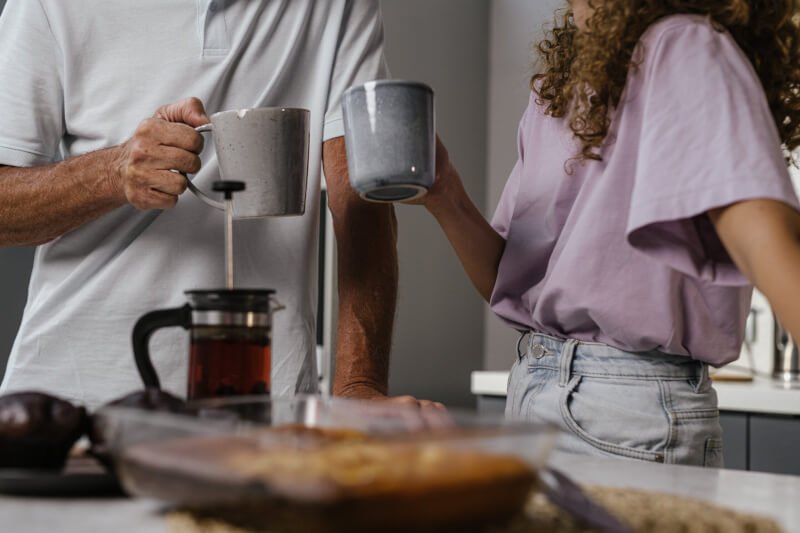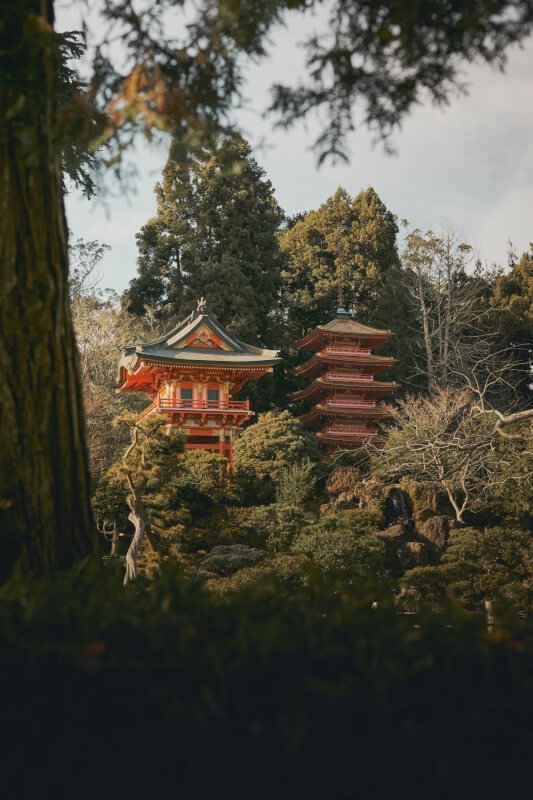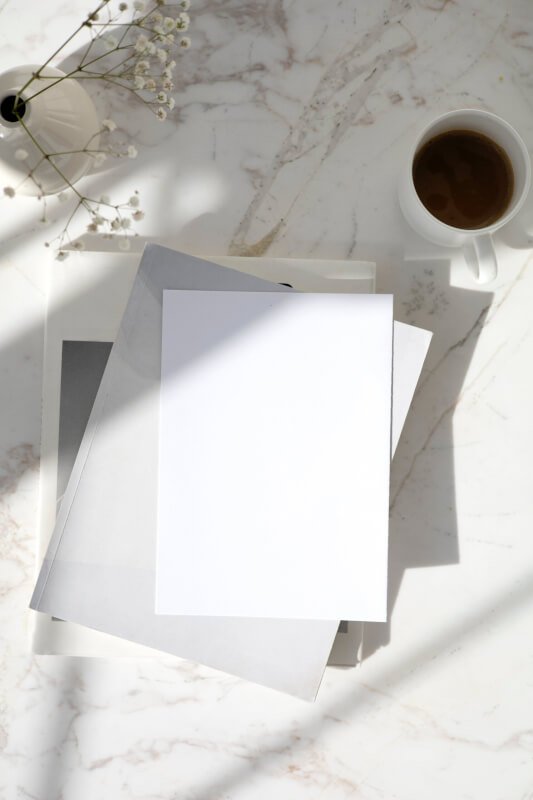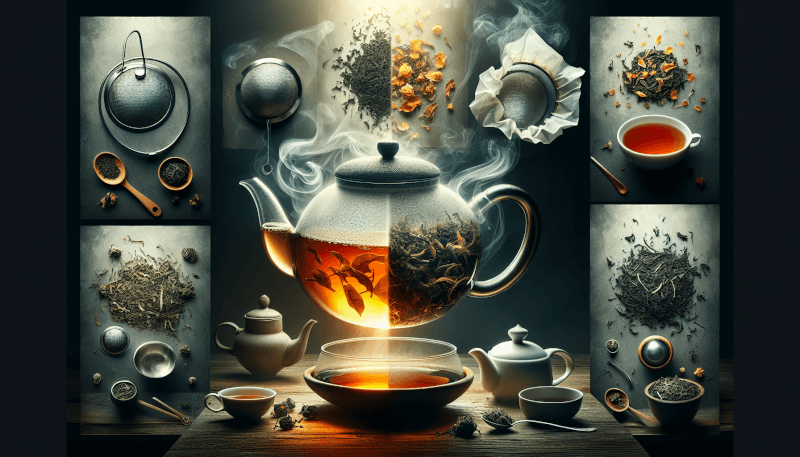Tea enthusiasts rejoice! This article will take you on a delightful journey through the fascinating world of tea brewing. Whether you prefer a soothing cup of hot tea or a refreshing glass of cold tea, we’ve got you covered. Get ready to learn about the best techniques to unlock the full flavor and aroma of your favorite tea leaves. From steeping temperatures to infusion times, we’ll delve into the secrets of achieving the perfect cup or glass every time. So sit back, relax, and prepare to elevate your tea brewing skills to the next level.

Hot Tea Brewing Techniques
1. Basic Steps for Brewing Hot Tea
Brewing hot tea is a delightful process that can elevate your tea-drinking experience to a whole new level. To start, fill a kettle with fresh, cold water and bring it to a boil. While the water is heating, choose your tea leaves and measure them according to your desired strength. Place the leaves in a tea infuser or teapot and pour the hot water over them. Allow the tea to steep for the recommended time, usually between 2 to 5 minutes, depending on the type of tea. Finally, remove the tea leaves or strain the liquid into your cup, and enjoy your hot and delicious brew!
2. Choosing the Right Tea Leaves
Selecting the right tea leaves is crucial for brewing a delicious cup of hot tea. There is a wide variety of tea available, including black, green, white, oolong, and herbal teas. Each type offers a unique flavor profile and characteristics. For a robust and full-bodied cup, black teas like Assam or Darjeeling are excellent choices. If you prefer a lighter and more delicate taste, green teas such as Sencha or Jasmine are perfect options. Herbal teas, on the other hand, offer a range of flavors, from soothing chamomile to refreshing peppermint. Experiment with different tea leaves to find your perfect cup!
3. Water Temperature and Steeping Time
Water temperature and steeping time play key roles in achieving the optimal flavor and aroma of hot tea. Different types of tea require specific water temperatures to bring out their best qualities. For black teas, boiling water at around 205°F (96°C) is ideal. Green teas, on the other hand, are best steeped with water between 160°F (71°C) and 180°F (82°C). White and oolong teas fall somewhere in between, typically requiring water around 180°F (82°C) to 200°F (93°C). Steeping time also varies depending on the tea type, but a general rule of thumb is to steep black tea for 3-5 minutes, green tea for 2-3 minutes, and white or oolong tea for 2-4 minutes.
4. Different Hot Tea Brewing Methods
There are various methods you can use to brew hot tea, allowing you to customize your experience according to your preferences. One popular method is using a tea infuser. Simply place your desired amount of tea in the infuser, put it in your cup, and pour hot water over it. Another classic option is a teapot. Add the loose leaf tea to the teapot and pour hot water over it. Let it steep for the designated time and use a strainer when pouring the tea into your cup. Tea bags are a convenient choice for on-the-go brewing. Place the tea bag in your cup, add hot water, and let it steep. Finally, for a more traditional approach, you can use a gaiwan or a Kyusu teapot, which allows you to steep the tea directly in the vessel and pour it into small cups.
5. Factors Affecting Hot Tea Flavor
Several factors contribute to the flavor of hot tea. The quality and freshness of the tea leaves are of utmost importance. High-quality tea leaves will provide a more nuanced and enjoyable taste. Additionally, the water quality and temperature can greatly impact the flavor. Using filtered water or spring water will ensure a clean and pure taste. The steeping time also plays a significant role, as over-steeping can result in a bitter taste. Finally, the vessel you choose to brew and drink your tea from can influence the flavor. Porcelain, glass, and clay are popular options that enhance the tea-drinking experience by preserving the flavor and aroma.
Cold Tea Brewing Techniques
1. Cold Brew Tea vs. Iced Tea
While both cold brew tea and iced tea are refreshing options for hot summer days, they differ in their brewing methods. Cold brew tea involves steeping tea leaves in cold or room temperature water for an extended period, typically overnight. This method produces a smoother, less bitter taste as the flavors slowly infuse into the water over time. On the other hand, iced tea is made by brewing tea leaves with hot water and then rapidly cooling it with ice. This method provides a quick and refreshing option; however, it may result in a slightly bitter taste due to the higher water temperature used.
2. Basic Steps for Cold Brew Tea
Cold brew tea is incredibly simple to make and requires minimal effort. Begin by placing your desired amount of tea leaves in a pitcher or jar. Fill the container with cold or room temperature water, ensuring that the leaves are fully submerged. Let the tea steep for several hours or overnight in the refrigerator. Once steeped, strain the tea leaves or remove the tea bags and enjoy your chilled brew over ice. Cold brew tea has a natural sweetness and a milder flavor compared to hot tea, making it a perfect choice for those who prefer a less intense taste.
3. Choosing the Right Tea Leaves
Similar to hot tea brewing, the choice of tea leaves significantly impacts the flavor of cold brew tea. However, some teas are better suited for the cold brewing method. It is recommended to opt for teas with a naturally sweet or floral flavor profile. Green teas such as Sencha or Dragonwell work exceptionally well for cold brews, providing a crisp and refreshing taste. Herbal teas like hibiscus or fruit blends create vibrant and flavorful cold brew options. Experimentation is key when selecting tea leaves for cold brew tea, so feel free to explore different combinations and find your preferred flavors.
4. Water Temperature and Steeping Time
Unlike hot tea, cold brew tea does not require specific water temperatures or steeping times. Since the tea is steeped in cold or room temperature water, there is no need to worry about temperature control. Steeping time for cold brew tea is typically longer, ranging from 6 to 12 hours, depending on your desired strength. However, this method of brewing allows for flexibility, and you can adjust the steeping time to suit your taste preference. Remember that longer steeping times will result in a stronger flavor, while shorter times will produce a milder taste.
5. Different Cold Tea Brewing Methods
Besides the traditional cold brew method, there are several other techniques to create cold tea. One popular method is flash chilling, where hot tea is brewed using the regular method and then rapidly cooled by pouring it over ice. Another option is to brew tea concentrate by using a higher tea-to-water ratio and then dilute it with cold water or ice when serving. Alternatively, you can use a shaker or a blender to create shaken or blended cold teas, incorporating ice, tea, and other ingredients like fruits or syrups for added flavor. These methods provide versatility and enable you to experiment with different cold tea creations.
6. Factors Affecting Cold Tea Flavor
Various factors can influence the flavor of cold tea. The choice of tea leaves plays a crucial role, as certain teas lend themselves better to cold brews and offer a more enjoyable taste. The steeping time is another important aspect as a longer steeping time can result in a stronger and more pronounced flavor. Additionally, the water quality is vital, just as it is when brewing hot tea. If possible, use filtered or spring water to ensure a clean and crisp taste. Finally, the inclusion of additional ingredients such as fruits, herbs, or sweeteners can enhance the flavor and create unique cold tea concoctions.

Comparing Hot and Cold Tea Brewing Techniques
1. Flavor Profiles of Hot and Cold Tea
One of the primary differences between hot and cold tea lies in their flavor profiles. Hot tea provides a rich, robust taste with distinct flavor notes that can range from floral and earthy to malty and smoky, depending on the tea type. Cold tea, particularly cold brew tea, offers a smoother and milder flavor, with the infusion process extracting the tea’s essence more gently. Cold brew tea tends to highlight the natural sweetness of the tea leaves and can be incredibly refreshing, especially during warmer months. Ultimately, choosing between hot and cold tea depends on your taste preferences and the occasion.
2. Brewing Techniques and Tea Varieties
The brewing techniques for hot and cold tea are distinct, catering to different taste sensations. Hot tea benefits from precise water temperatures and shorter steeping times to extract the desired flavors. This allows for a greater emphasis on the complexities and nuances of the tea leaves. Cold brew tea, on the other hand, relies on longer steeping times and the gradual infusion of flavors in cool water. This method provides a smoother taste and highlights the natural sweetness of the tea. As for tea varieties, both hot and cold tea can be made using various types, ensuring a diverse and flavorful experience.
3. Health Benefits of Hot and Cold Tea
Both hot and cold tea offer a multitude of health benefits, making them excellent choices for wellness-oriented individuals. Hot tea is known for its potential antioxidant properties, helping boost the immune system and reduce the risk of chronic diseases. It can also aid in digestion and promote relaxation. Cold tea, particularly cold brew tea, has similar antioxidant benefits but is often consumed for its hydrating properties and refreshing qualities. Additionally, cold brew tea tends to have lower caffeine content compared to hot tea, making it a suitable alternative for those seeking to limit their caffeine intake.
4. Popular Hot and Cold Tea Recipes
Whether you prefer hot or cold tea, there is an endless array of recipes to suit your taste buds. For hot tea lovers, classic recipes like Earl Grey with a hint of lavender or Masala Chai with warm spices are perennial favorites. For cold tea enthusiasts, refreshing options like mint-infused green tea or fruity hibiscus iced tea are popular choices. Experimenting with ingredients such as lemon, honey, ginger, or even a splash of fruit juice can add a delightful twist to your favorite hot or cold tea recipes. Get creative and explore the vast world of tea recipes to find your perfect blend.
5. Consumer Preferences and Regional Differences
Consumer preferences for hot or cold tea can vary greatly depending on factors like culture, climate, and personal taste. In colder regions, hot tea tends to be the beverage of choice, providing warmth and comfort during chilly weather. On the other hand, regions with hotter climates often favor cold tea for its cooling properties. However, personal preferences play a significant role, with many tea enthusiasts enjoying both hot and cold tea throughout the year. The diverse range of tea options and brewing techniques allows for a personalized tea-drinking experience, catering to various regional and individual preferences.

Tips and Tricks
1. Experimenting with Tea Blends
One of the joys of tea brewing is the ability to experiment with different tea blends. Mixing various tea leaves can result in unique and tantalizing flavor combinations. For hot tea, try blending a floral tea like rose petals with a smoky black tea for an intriguing twist. For cold tea, mix green tea with citrus fruits or herbal tea with fresh mint leaves for a refreshing summer blend. The possibilities are endless, so don’t be afraid to get creative and discover your signature tea blend.
2. Enhancing Hot and Cold Tea with Ingredients
To take your hot or cold tea to the next level, consider enhancing it with additional ingredients. For hot tea, adding a dash of honey or a slice of lemon can provide a touch of sweetness or acidity, respectively. You can also experiment with spices like cinnamon or cardamom to create warming and aromatic flavor profiles. When it comes to cold tea, fresh fruits like berries or slices of cucumber can infuse the tea with a burst of natural freshness. Whether hot or cold, experimenting with ingredients allows you to personalize your tea and heighten the flavor experience.
3. Proper Storage of Tea Leaves
To maintain the quality and flavor of your tea leaves, proper storage is paramount. Store your tea in an airtight container, away from light, moisture, and strong odors. This will prevent spoilage and preserve the freshness of the leaves. Avoid storing tea near spices or herbs, as they can impart unwanted flavors onto the tea. Additionally, refrain from storing tea leaves in the refrigerator, as the moisture can cause them to deteriorate. By following proper storage practices, you can ensure that your tea leaves stay fresh and produce a satisfying cup of tea every time.
4. Brewing Tea with Different Vessels
Tea brewing vessels can have a noticeable impact on the overall tea-drinking experience. Porcelain, glass, and clay teapots are popular choices that allow the tea leaves to fully expand, promoting optimal flavor extraction. Glass teapots offer the advantage of visually appreciating the tea leaves and their unfurling during the steeping process. For hotter teas, porcelain teapots help retain heat and maintain the temperature. Additionally, different vessel shapes can influence the tea’s taste perception, so consider using a variety of teapots, cups, and mugs to enhance your tea-drinking experience.
5. Understanding Tea Ratios and Proportions
Finding the right tea-to-water ratio and proportions is essential for achieving the desired strength and flavor in your cup of tea. For hot tea, a general guideline is to use 1 teaspoon of tea leaves per 8 ounces of water. However, this can vary depending on personal preference and the type of tea being brewed. If you prefer a stronger brew, increase the amount of tea leaves, or steep for a longer time. For cold tea, the ratio can be adjusted to achieve your desired taste. Remember to experiment with ratios and proportions to discover the perfect balance that suits your palate.
In conclusion, exploring the best tea brewing techniques for hot and cold tea opens up a world of flavors, aromas, and experiences. From the basic steps of brewing tea to selecting the right tea leaves, water temperature, and steeping time, each element contributes to the final cup. Comparing hot and cold tea brewing techniques highlights the contrasting flavor profiles, brewing methods, and health benefits. Tips and tricks provide useful insights for enhancing your tea drinking experience and discovering new flavors. So grab your favorite tea leaves, try out different brewing techniques, and savor the joy of a perfectly brewed cup, whether hot or cold.


